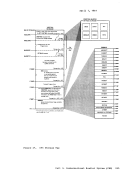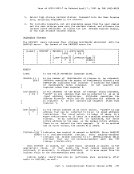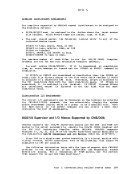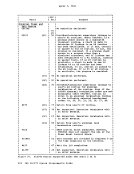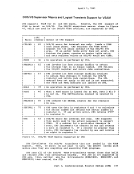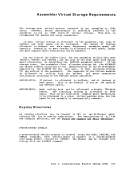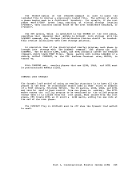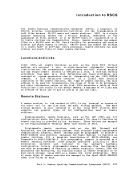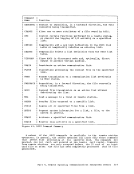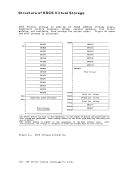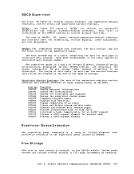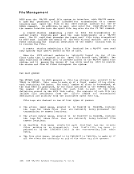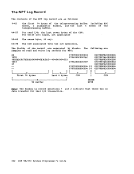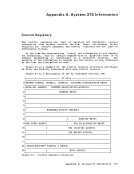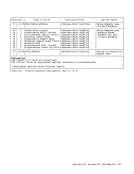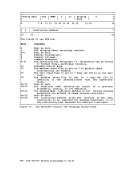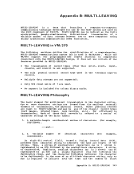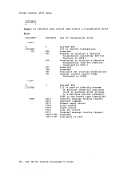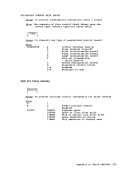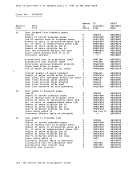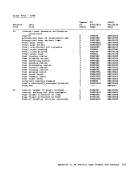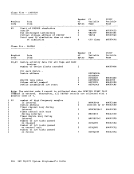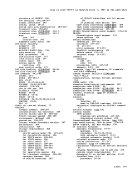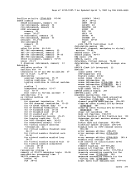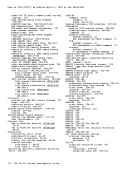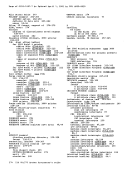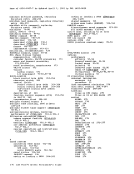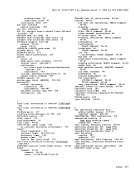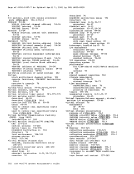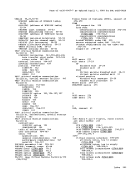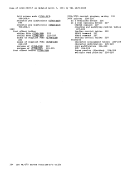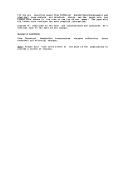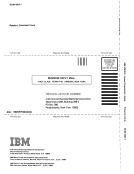April 1, 1981
The source virtual machine can cancel a previously executedSEND/RECV request provided the sink virtual machine has not yet executed the REPLY or REJECTsubfunction. If the sink
theRECEIVE subfunction, only the REPLY DIAGNOSE Code x'68' Subfunction Code X·0006'"). The sink virtual machine can execute the REJECT subfunction in
response to theSEND/RECV request and cause the entire operation to be
terminated (see "REJECT: DIAGNOSE CodeX'68' Subfunction Code X·0011'"). The sink virtual machine can respond to a SEND/RECV request with the REPLY subfunction without executing the RECEIVE
the effect of informing the source virtual machine that the sink virtual
machine cannot accept data but that it can send data. The source
virtual machine could have executed theSEND/RECV subfunction only as a
means to solicit data from the sinkvirtual machine. The application of
this protocol is up toVMCF users. The user doubleword can be used as a
meanst::> control such an application (see "VMCF User Doubleword") ... You can execute a SEND/RECV request using the PRIORITY option. The PRIORITY option causes the sink external interrupt for the SEND/RECV request to be queued ahead of any other nonpriority external interrupts.
Response external interrupts directed to the source of aPRIORITY message are also queued in priority order. SENDX directs data to another virtual machine via a faster but more
restrictive protocol than the SEND subfunction.SENDX subfunction data
reaches the sink virtual machine at the same time the SEND external
interrupt reaches the sink. In order to use theSENDX subfunction, the
sink virtual machine must have an external interrupt buffer large enough
to contain both the standard message header and the data. The size of
the external interrupt buffer is specified when you execute theAUTHORIZE subfunction. Attempts to execute SENDX are rejected when the
sink virtual machine's external interrupt buffer is not large enough to
contain the data. After the sink virtual machine receives theSEND external interrupt and data, a response external interrupt is directed
to the source virtual machine. TheSENDX subfunction eliminates the
need for a sink virtual machine to execute aRECEIVE subfunction.
ASENDX request can be canceled by the source virtual machine
provided theSENDX external interrupt has not yet been reflected to the
sink virtual machine (see"CANCEL: DIAGNOSE Code X'68' Subfunction Code X'0006·
1I
). Specify the SENDX buffer address and length in the user parameter
list(VMCPARM). The message ID and userid of the sink virtual machine
are also specified inVMCPARM. The SENDX subfunction can be executed with the PRIORITY allowing the SEND external interrupt to be queued ahead
nonpriority external interrupts for the sink virtual machine.
option
of all
ASENDX request cannot be rejected by the sink virtual machine since t1re - . is -- - rec-e iv-edat th-e-sa-me - ti-m-e - the -ext-eFn-a-l---i-n-t-e-£I'up-t- is received. You can execute the SENDX subfunction with a zero data length causing
only the message header and user doubleword to be transmitted.
Part 2. Control Program(CP) 157
The source virtual machine can cancel a previously executed
the
response to the
terminated (see "REJECT: DIAGNOSE Code
the effect of informing the source virtual machine that the sink virtual
machine cannot accept data but that it can send data. The source
virtual machine could have executed the
means to solicit data from the sink
this protocol is up to
means
Response external interrupts directed to the source of a
restrictive protocol than the SEND subfunction.
reaches the sink virtual machine at the same time the SEND external
interrupt reaches the sink. In order to use the
sink virtual machine must have an external interrupt buffer large enough
to contain both the standard message header and the data. The size of
the external interrupt buffer is specified when you execute the
sink virtual machine's external interrupt buffer is not large enough to
contain the data. After the sink virtual machine receives the
to the source virtual machine. The
need for a sink virtual machine to execute a
A
provided the
sink virtual machine (see
1I
).
list
are also specified in
nonpriority external interrupts for the sink virtual machine.
option
of all
A
only the message header and user doubleword to be transmitted.
Part 2. Control Program

























































































































































































































































































